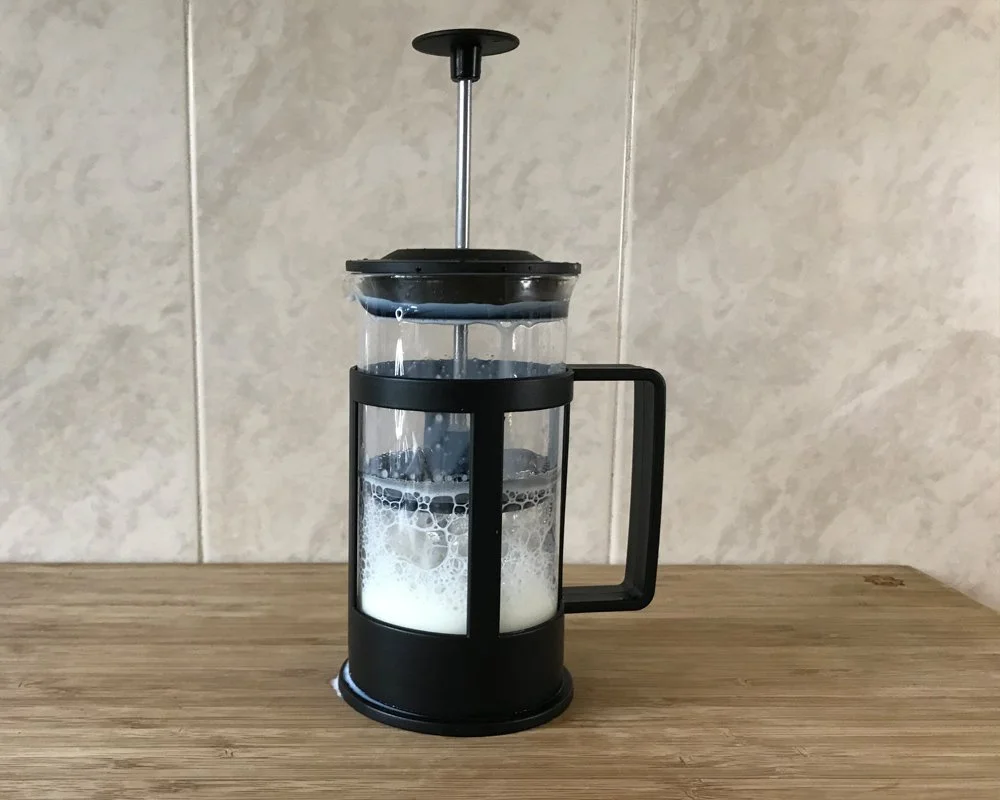How to Froth Milk using a French Press
Ordering a cappuccino or a café latte at a good coffee shop and having the Barista serve up an expertly crafted drink with perfect foam displaying enviable latte art is one of life's joys.
The foam on top of that espresso drink elevates the coffee experience.
Is it possible to froth milk to make your home brewed café-au-lait more interesting without having to invest in an automatic espresso machine or a standalone milk steamer?
Try your French press.
It may seem odd though it is worth a try. There is a slight learning curve, but like with all things coffee, it’s a good little trick to have handy and a skill that gets better with repetition.
Here are the main steps:
Heat whole milk, either in the microwave or on the stove. But don’t let it boil.
Pour the milk into your French press beaker.
Place the lid and plunger onto the beaker. Make sure the plunger filter is submerged in the milk.
Hold the handle securely.
Perform five plunges from the top to the bottom of the beaker.
Then perform smaller plunges keeping the filter under the surface of the milk, continuously for 30 seconds to a minute, until the milk thickens.
Tap the beaker on the counter gently to get rid of larger bubbles and swirl the milk to even out the texture.
The basic concept here is that this method incorporates air into the milk, first with the large plunge movements followed by the smaller movements. In a way, it mimics the process of steaming the milk with a steam wand. A Barista will first introduce air to the milk then texture the milk by creating micro-foam, while simultaneously warming the milk with the steam. The resultant textured milk is a combination of steamed milk and micro-foam, avoiding large bubbles and, when swirled, has the appearance of glossy paint.
Here are some key tips to remember.
Your plunger does not go all the way down to the bottom of the beaker, so you need enough milk to cover the filter for this method.
Don’t heat the milk past 70°C/ 158°F – higher temperatures can damage the milk, losing texture or souring the milk.
Foam consistency can vary. The foam can be thick and stiff, or soft with a looser foam structure like a flat white. Somewhere in between that is well-textured milk with a latte or cappuccino feel. If you’re skilled enough, you could get some latte art out of it. Check out BaristaJoy’s YouTube video for that, as well as MorganDrinksCoffee’s take on it.
If you only have one French press, and you’re also using it to brew your coffee, you may need to perform double duty to coordinate between the two processes.
This is not a perfect science. There are a few different methods and processes out there for this, but it’s best to try it out for yourself and find a procedure and timing that works for you.
Check out this other article (Frothing Milk with a French Press Test) with the results of some tests that we ran and some more tips we picked up.
Let us know the results of your attempts in the comments section and if you have any tips we could learn from.


